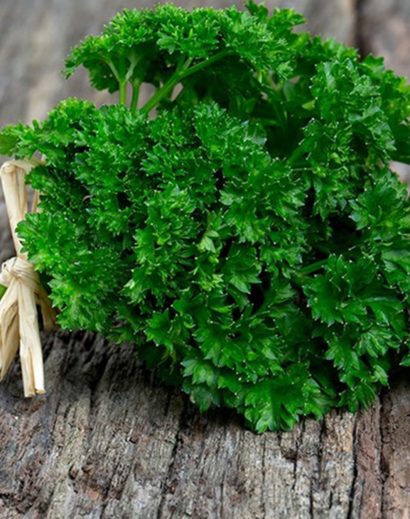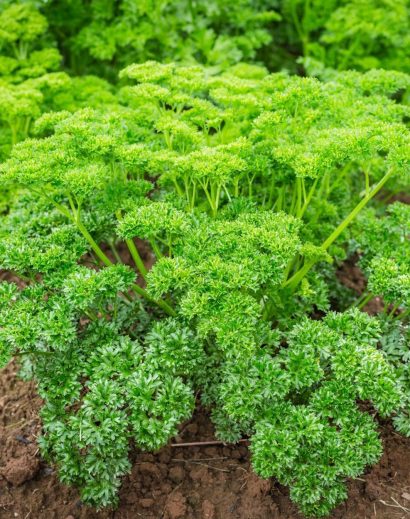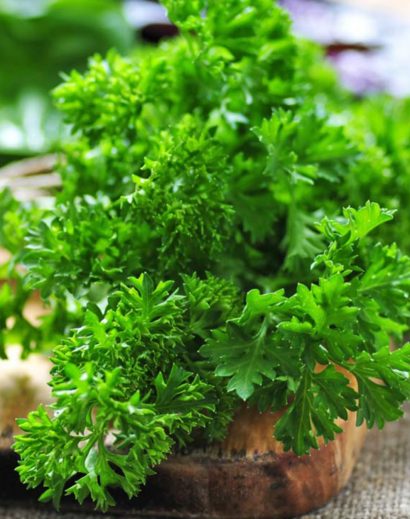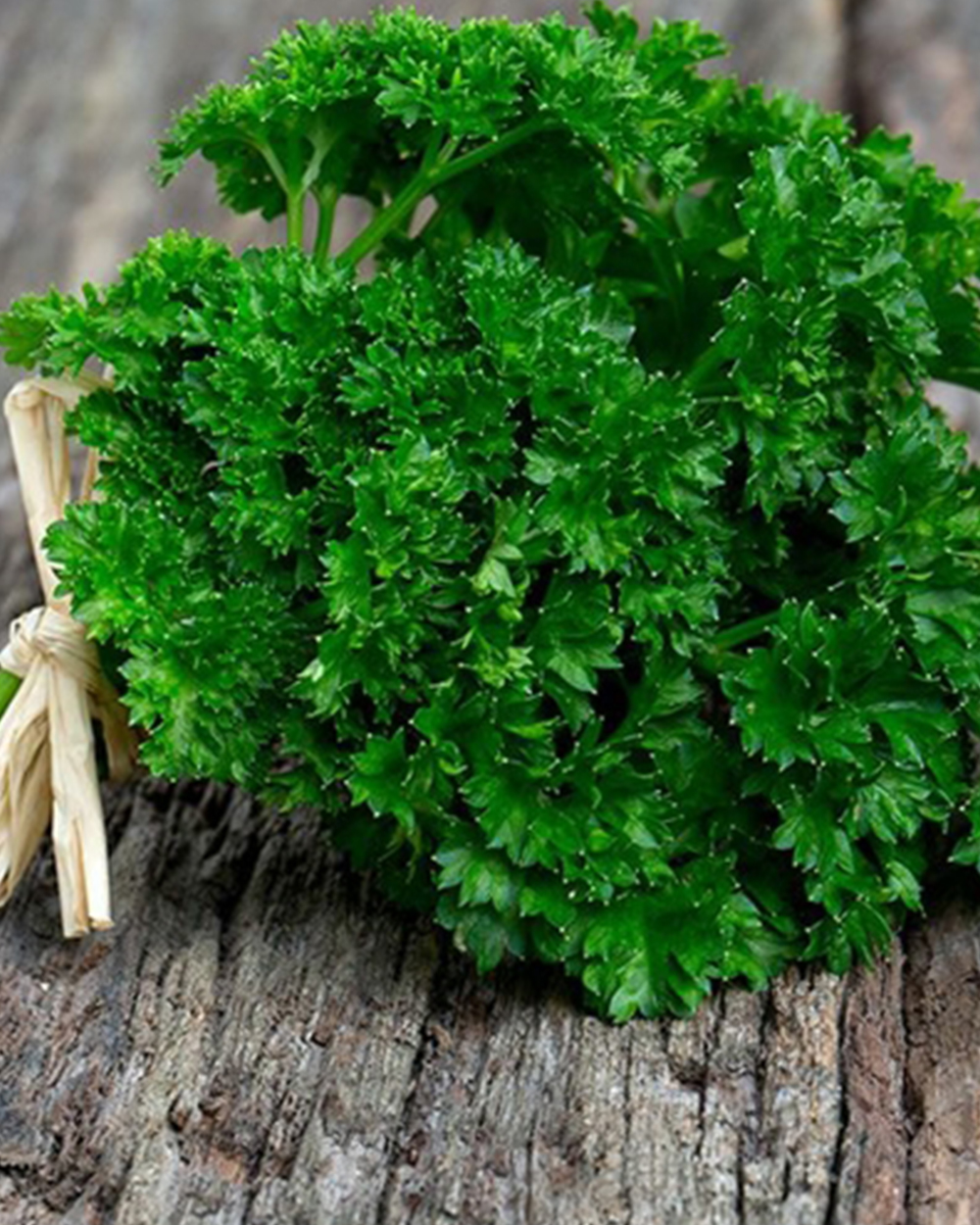Parsley (Petroselinum crispum) is a widely used herb in cooking, known for its fresh, vibrant flavor and versatility. There are two main types of parsley: curly-leaf parsley and flat-leaf parsley, also known as Italian parsley. Here are some key details about parsley herb:
- Flavor and Aroma: Parsley has a mild, slightly peppery and fresh flavor. It adds a subtle, earthy brightness to dishes and is often used as a garnish to enhance the visual appeal of a meal.
- Culinary Uses:
- Garnish: Parsley is commonly used as a garnish to decorate and add a pop of green color to various dishes.
- Flavor Enhancer: It is used to enhance the flavor of soups, stews, sauces, and salads.
- Key Ingredient: Parsley is a crucial ingredient in some traditional dishes, such as tabbouleh (a Middle Eastern salad) and gremolata (a condiment used in Italian cuisine).
- Types of Parsley:
- Curly-Leaf Parsley: This type has tightly curled, bright green leaves and is often used as a garnish.
- Flat-Leaf Parsley (Italian Parsley): This variety has flat, dark green leaves and is favored for its stronger flavor, making it a better choice for cooking.
- Health Benefits:
- Parsley is rich in vitamins (particularly vitamin K and vitamin C), minerals (like calcium and potassium), and antioxidants.
- Some people use parsley as a natural breath freshener.
- It may have anti-inflammatory and diuretic properties.
- Cultivation: Parsley is relatively easy to grow in home gardens or pots. It prefers well-drained soil and can be grown from seeds or seedlings. It’s a biennial plant, but it is usually treated as an annual in culinary applications.
- Storage: To keep parsley fresh, store it in the refrigerator in a plastic bag or airtight container with a damp paper towel to maintain moisture.
- Cautions: While parsley is generally safe to consume in culinary amounts, consuming very large quantities (such as in the form of parsley supplements or parsley tea) can have adverse effects due to its high vitamin K content. It may also interact with certain medications.
Parsley is a versatile herb that adds a refreshing touch to a wide range of dishes. Whether you use it as a garnish or a flavor enhancer, it’s a valuable ingredient in many cuisines around the world.





Reviews
There are no reviews yet.